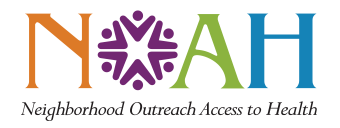Let’s Talk About Eating Disorders
By Maggie Hensley, RD | Registered Dietitian
The last week of February is National Eating Disorder Awareness week. This week helps raise awareness on how common eating disorders actually are. According to the National Eating Disorder Association (NEDA), 28.2 million Americans experience an eating disorder at some point in their lives.
National Eating Disorder Awareness Week also helps end the stigma of getting help and treatment for them. Have questions about eating disorders, signs, and treatments? You aren’t alone.
What’s an Eating Disorder?
Eating disorders are mental and physical illnesses. People of all ages, sexes, and background can face eating disorders. In general, an eating disorder involves a person becoming focused on food and weight issues to the point where it gets harder to focus on other parts of your life.
Eating disorders include several related conditions each with its own unique symptoms. Some of the more well-known eating disorders include:
- Anorexia Nervosa – involves weight loss and challenges having a healthy body weight for age and height.
- Bulimia Nervosa – is when a person goes between cycles of binge eating and getting ride of the excess food they ate, either by vomiting, laxatives, or excessive exercise.
- Binge Eating – involves someone losing control over their eating, usually eating large amounts of food even when they aren’t hungry.
The more we learn about eating disorders, the more we realize these illnesses can affect any type of person. Many people who don’t fit our perception of what an eating disorder looks like don’t get diagnosed because of current kinds screening tools used.
Signs & Symptoms of Eating Disorders
According to the NEDA, there are emotional and physical signs that someone might be living with an eating disorder. Some signs like weight fluctuations, extreme mood swings, uncomfortable eating with others, dizziness, sleep problems, and others listed here.
The NEDA also has a confidential online screening for those 13 years and older here. The earlier an eating disorder is detected, the sooner treatment can begin, and the better the person’s recovery. And recovery is important, because after opioid-dependency, eating disorders are the second most deadly mental illness.
Eating Disorder Prevention
The best way to avoid an eating disorder is to have a healthy relationship with food. That usually means ditching diets that call for heavy calorie restriction or eliminating an entire food group. Anything less than 1800 calories per day is usually not advised. When thinking about any diets, remember that all food groups are important, even carbohydrates!
It is also important to practice body positivity or body neutrality. This helps us realize we are so much more than just our bodies. This can help us learn that bodies come in all kinds of shapes, colors, and sizes.
If you are unhappy with your current eating patterns or want to pursue a healthier relationship with food, talk to NOAH. We have on-site dietitians who are experts in nutrition and can help you with those needs.

